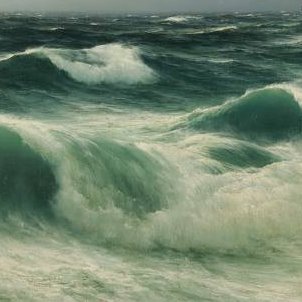Martine Emdur is a successful Australian artist whose work has been posted here before. She works on a large scale, and this prompts me to add to comments I have made previously about scale in painting.
On of the realities of the art market is that large scale works are often favoured by galleries dealing in contemporary works, not only because the price (and therefore the commission) is usually higher, but because they suggest an artist who has confidence and maturity, and who is established to the point where their work is being hung in large gallery spaces.
Also, wealthy clients, or their interior designers, look for large pieces that are not lost on the vast wall areas of office building foyers, board rooms, or upper-end-of-the-market living rooms.
As I've said before: there is a correct scale for every subject, and big is not always better, but vastness certainly does give impact, and can make people stop and really look at something that they may not have noticed before. This was an observation made by Georgia O'Keeffe - she wanted busy city people to pause and see what she saw in the intimate and timeless world of flowers, so she painted them on a vast scale.
Her recent paintings of water have struck a chord with the public: people are willing to wait two years to buy one.
Gallery director Ali Yeldham, suggests Emdur's work is so popular because everyone can relate to water.
"Her work is very therapeutic," says Yeldham. "It evokes calmness, a stillness. When the gallery is hung with her paintings it becomes soothing and tranquil. After September 11, we found people would come in just to be around them, to seek some solace. They have that effect."
Even though artists have always painted water, Emdur has developed a unique way of rendering liquid landscapes.
"They were captivating images. I knew there was something very special about them," says Yeldham. "Martine's paintings evoke the memories of childhood, of past experiences so many of us have had at the seaside, in that place."
Her shows have moved away from the figurative and have become more about the water itself. The refracted light. The movement.
"It's just water. No peripherals. I've spent a really long time trying to learn about how it all flows and how to paint it. The patterns. The flow, the light going through it. The circles of light in the water. It's hard to describe.
















































